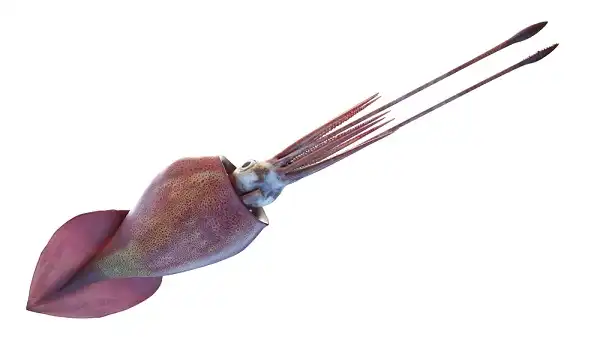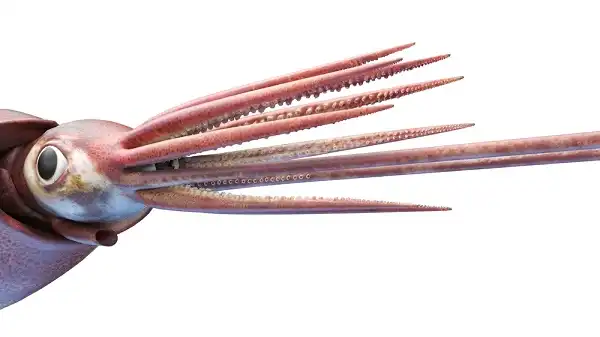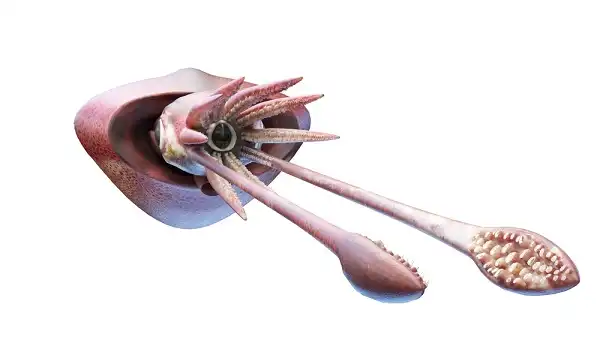Have you ever heard of the mysterious creature known as a colossal squid? This majestic and sometimes intimidating sea beast has been swimming through the darkest depths of the ocean, rarely seen by human eyes. With tentacles that can grow up to 33 feet long, this gargantuan cephalopod looks like something from a science-fiction movie! But what else do we know about this amazing creature, and why should we care about it? Read on to learn all about this fascinating animal and how it is impacting our understanding of marine life.

Colossal Squid Description
The Colossal Squid is a member of the Cephalopoda family and is the largest known invertebrate species in the world. They have eight arms and two additional longer tentacles, which they use for grasping their prey. Colossal Squid has a large, distinct head with two large eyes located on its sides. Their bodies are composed of an internal shell made of chitin, and they have strong beak-like jaws that can easily break through their prey’s shells. They also possess sharp hooks located on their arms and tentacles that they use to attack their prey.
Colossal Squid Habitat
The natural habitat of the Colossal Squid is the extreme depths of the Southern Ocean, usually in waters around 2,000 meters deep or more. This area is known for its cold temperatures, strong currents, and low oxygen levels. These conditions make it difficult for most species to survive in this environment, which explains why Colossal Squids are rarely seen by humans. Colossal Squids prefer to live near continental shelves and seamounts where they have plentiful access to food sources. This area also provides a good hiding spot for them from predators like sperm whales and sleeper sharks since it is too deep for most predators to reach. Colossal squid are nomadic creatures that tend to migrate long distances using their tentacles to “fly” through the water column. They have even been spotted near New Zealand during their long journeys across the ocean!
Colossal Squid Diet
The Colossal Squid has a carnivorous diet that mainly consists of fish, shrimp, and other cephalopods. They use their sharp beaks to break through the shells of their prey before using their tentacles to grasp and consume them. They have even been known to feed on larger animals such as small whales, although this is rare. They prefer eating fresh food sources but are known to scavenge from dead animals if necessary. Colossal Squids are also capable of storing excess food within their bodies and can survive for extended periods without feeding if needed. Studies have shown that Colossal Squid plays an important role in maintaining the health of deep ocean ecosystems by preying on smaller creatures that could potentially disrupt the balance of these delicate areas. Because they are difficult to observe in their natural environment, we still don’t know all the details about their diet or how it affects marine life around them, but we do know that these mysterious creatures are powerful predators and should be respected as such!

Colossal Squid Size
The Colossal Squid is an immense creature that can reach lengths of up to 46 feet, with tentacles that can grow as long as 33 feet. It has an internal shell made of chitin, large eyes located on its sides, and eight arms with two additional longer tentacles for grasping prey. It is believed to be the largest known invertebrate species in the world and its size and power have even been feared by ancient civilizations. In comparison to other cephalopods, the Colossal Squid reigns supreme in terms of sheer size. Its adult length is often twice as long as some other giant squid species such as the Giant Squid (Architeuthis sp.) which only reaches lengths of 13-15 meters. It is also much heavier than other squid species at an average weight of 750 kg, though some specimens have been documented weighing more than a ton!
Colossal Squid Lifespan
The lifespan of the Colossal Squid is still relatively unknown due to its elusive nature and deep-sea habitat. It is believed that they can live up to 5 years in ideal conditions but this has not been proven yet. Studies have suggested that their development may be slower than other species due to their diet and cold environment, allowing them to reach larger sizes by the time they become adults. Colossal Squids are known to reproduce in late winter and early spring when water temperatures start to rise. Female squids lay thousands of eggs during this period, with a single female capable of producing up to 25 million eggs in one spawning season! The eggs are laid in batches with each batch containing as many as 1,000 tiny spherical eggs. These eggs usually take around 10 months before hatching into larvae, which are very tiny at only 2 millimeters long. After hatching, these larvae will feed on plankton and small fish for several months before growing into a juvenile squid and eventually adulthood. This growth process can take a few years depending on environmental factors such as food availability and water temperature.
Colossal Squid Behavior
The behavior of Colossal Squid is mostly unknown due to their elusive nature and deep sea home. However, studies have revealed some clues about this mysterious species. It has been observed that they tend to be solitary animals, often preferring to hunt alone or in small groups rather than in large aggregations like other cephalopods. Colossal Squids are active hunters who use their sharp beaks and strong tentacles to capture and consume their prey. They are also capable of emitting an ink cloud made from mucous-like substances which helps them disorientate their victims before attacking with its tentacles and beak. They have been known to show signs of aggression when threatened by potential predators, such as whales or other large marine animals, exhibiting behaviors such as thrashing aggressively with their tentacles or releasing a volley of ink clouds. This behavior is likely intended both as a defensive measure against predation and a way for them to communicate with each other over long distances in the open ocean.

Colossal Squid Speed
Colossal Squid is among the fastest swimmers in the deep sea. They can reach speeds of up to 24 km/h, which is comparable to some of the fastest fish species. This incredible speed allows them to pursue prey over long distances and makes them formidable predators in their environment. Their tentacles are also incredibly powerful; they can exert over 600 pounds of pressure per square inch when attacking prey or defending themselves from predators. This strength, combined with their fast swimming speeds, gives them an immense advantage when hunting and helps them capture larger prey that other creatures may find difficult or even impossible to capture!
Not only do Colossal Squids have an impressive top speed, but they are also capable of sudden bursts of acceleration and can quickly change direction during pursuit – making them even more difficult for potential prey to escape from. Studies suggest that they are able to achieve these high speeds by using both jet propulsion and body-wave locomotion – propelling themselves forward with jets of water propelled through their funnel-like siphon while using muscular contractions within their mantle muscle walls to move through the water.
Colossal Squid Hunting
Colossal Squids are true apex predators of the deep sea, capable of hunting and capturing prey much larger than themselves. Due to their enormous size and powerful tentacles, they can catch even the biggest of animals in the ocean with ease. Their preferred diet includes fish, octopi, crustaceans, and even other cephalopods such as squids and cuttlefish. These creatures hunt mostly at night, using their two large eyes situated on either side of their head to detect movement in the dark depths of the ocean.
They then use jet propulsion and body-wave locomotion to quickly accelerate toward their target before grabbing it with their tentacle arms. Once captured, a Colossal Squid will use its sharp beak and strong tentacles to tear off pieces of flesh from its prey before consuming it. Not only do Colossal Squids feed on large marine organisms such as whales and cuttlefish but they are also capable of preying on smaller animals like squid eggs or plankton when necessary – providing them with a more diverse diet overall.

Conclusion
The Colossal Squid is one of the most fascinating creatures in the deep sea. With its two large eyes situated on either side of its head, powerful tentacles, and impressive speed, it is an excellent predator in its own right. It has been observed to hunt both actively and scavenge for prey, using jet propulsion and body-wave locomotion to quickly pursue potential targets. Furthermore, little is known about their social behavior or how they form communities – indicating that more research into this species is necessary if we are ever to understand their habits fully. Despite all this, however, much has been learned over the years about these majestic creatures – giving us a better appreciation of what life is like beneath the waves!
Frequently Asked Question


